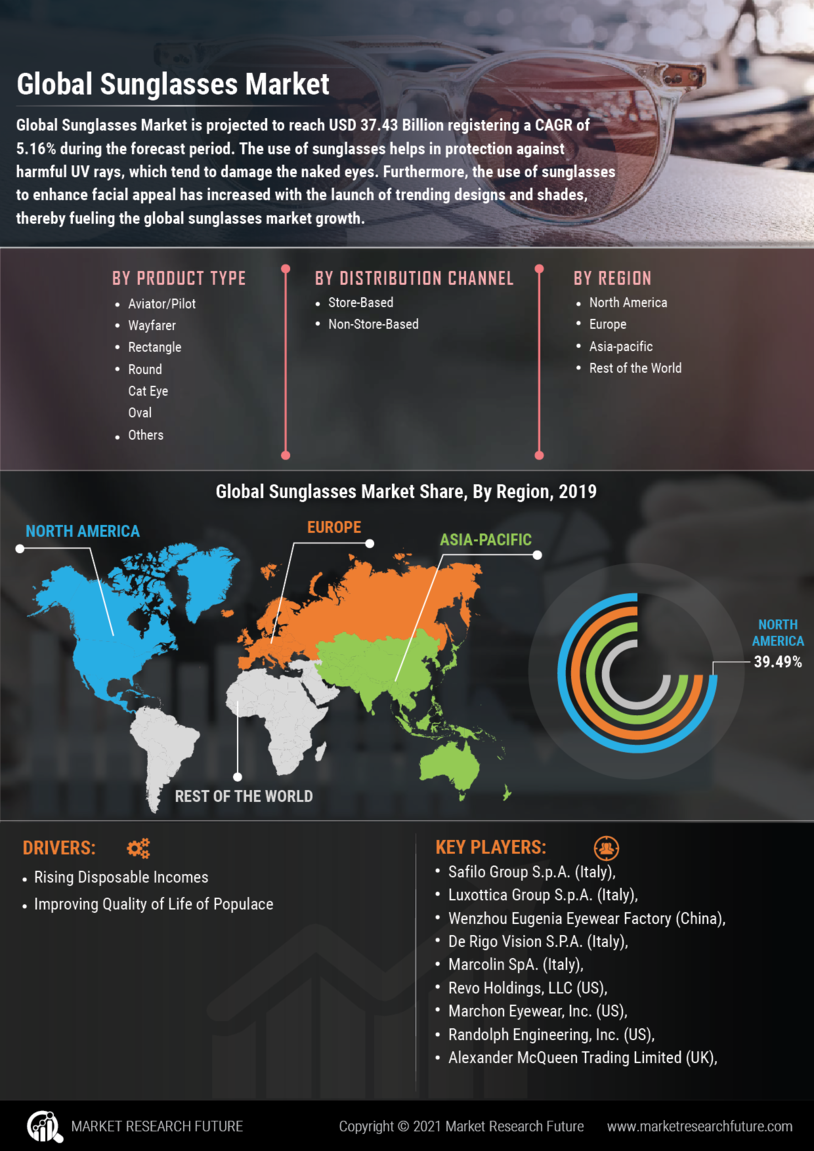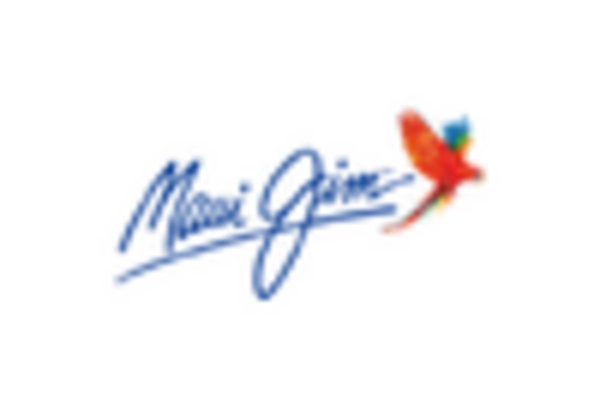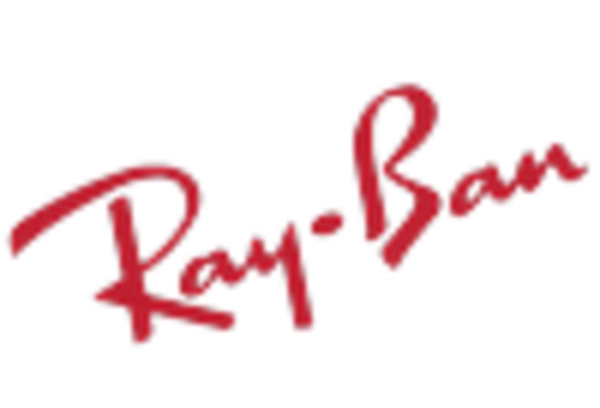The Sunglasses Market is currently characterized by a dynamic competitive landscape, driven by factors such as increasing consumer awareness regarding eye protection, fashion trends, and the growing influence of social media. Major players like Luxottica (IT), Ray-Ban (IT), and Oakley (US) are strategically positioned to leverage these trends through innovation and brand diversification. Luxottica, for instance, has focused on expanding its product lines to include sustainable materials, which aligns with the rising consumer demand for eco-friendly products. Meanwhile, Ray-Ban continues to enhance its digital presence, utilizing augmented reality to allow customers to virtually try on sunglasses, thereby enhancing the shopping experience. These strategies collectively shape a competitive environment that emphasizes not only product quality but also consumer engagement and sustainability.
In terms of business tactics, companies are increasingly localizing manufacturing to reduce lead times and optimize supply chains. This approach appears to be particularly effective in a moderately fragmented market where agility can provide a competitive edge. The collective influence of key players, including Safilo Group (IT) and Maui Jim (US), suggests a trend towards consolidation, as these companies seek to enhance their market share through strategic partnerships and acquisitions.
In August 2025, Safilo Group (IT) announced a collaboration with a leading tech firm to develop smart sunglasses that integrate health-monitoring features. This strategic move not only positions Safilo at the forefront of wearable technology but also caters to the growing consumer interest in health and wellness. The integration of technology into eyewear could potentially redefine consumer expectations and expand market opportunities.
In September 2025, Oakley (US) launched a new line of performance sunglasses designed specifically for athletes, featuring advanced lens technology that adapts to varying light conditions. This initiative underscores Oakley’s commitment to innovation and its focus on niche markets, which may enhance brand loyalty among sports enthusiasts. By addressing specific consumer needs, Oakley is likely to strengthen its competitive position in the performance eyewear segment.
Furthermore, in July 2025, Maui Jim (US) expanded its distribution network by entering into a partnership with a prominent online retailer. This strategic action aims to enhance accessibility and visibility of its products, particularly among younger consumers who prefer online shopping. Such a move indicates a shift towards digital transformation, which is becoming increasingly vital in the current retail landscape.
As of October 2025, the competitive trends in the sunglasses market are heavily influenced by digitalization, sustainability, and the integration of artificial intelligence. Strategic alliances are shaping the landscape, allowing companies to pool resources and expertise to innovate more effectively. Looking ahead, competitive differentiation is likely to evolve from traditional price-based competition to a focus on innovation, technology integration, and supply chain reliability. This shift may redefine consumer expectations and create new benchmarks for success in the sunglasses market.


















Leave a Comment